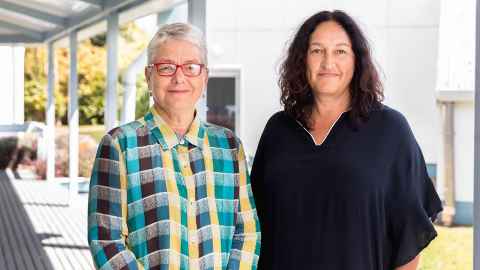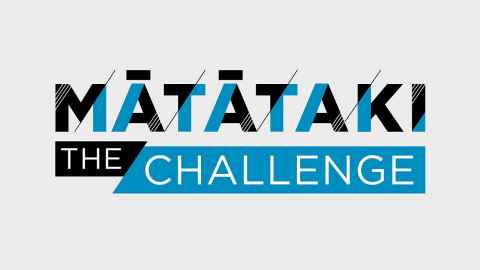Indigenising our universities: Tēnā tātou 'here we all are'
27 March 2023
Opinion: In a three-part series, Te Kawehau Hoskins and Alison Jones explore the value of an evolving Treaty partnership to higher education. Part 1: Who is the ‘we’ at our institutions.

Thirty years before Te Tiriti o Waitangi, northern rangatira Ruatara, Hongi Hika and others sought a Pākehā teacher so that their “tamoneekes and kocteedos” (boys and girls) could learn to read and write.
In 1890 Te Aute College principal John Thornton said his talented young Māori students should go to university. Leading academic Professor Sir Mason Durie in 2009 articulated the potential for Māori and Pākehā to come together with mutual respect at universities: “Māori leaders in the future will need to be well versed in Māori culture and lore, as well as in the universal disciplines of science, business, law and the humanities.
“In that respect, the most convincing justification for a strong Māori presence in higher education is linked to the national benefits likely to accrue from knowledge creation at the interface between Indigenous knowledge, science, philosophy and commerce.”
These are a tiny sample of the leaders who have urged the best of the education system in Aotearoa New Zealand to serve the needs and desires of the indigenous people and by doing so contribute to the social good.
Universities have been responsive to these calls, at least since the 1990s. Ubiquitous strategic plans make it a priority to fulfil “our commitment to the Treaty of Waitangi”. The Education and Training Act (2020) states its purpose as “establishing and regulating an education system that honours Te Tiriti o Waitangi”.
The Tertiary Education Commission’s tertiary education strategy highlights priorities for universities. Our universities should strive to remove barriers to access for Māori students, develop learning settings that are free from racism, build relationships with whānau and communities, and be responsive to learners’ identities while incorporating te reo and tikanga Māori into everyday activities.
These admirable priorities dominate educational rhetoric. They offer practical guidance but lack any philosophical and political framework for genuine change. Most of the priorities could be accomplished without any significant alteration to how universities operate.
Speaking more reo, better access for Māori, and making curricula ‘responsive’ to students are not much of a departure from the old ‘taha Māori’ approach that encouraged schools to include the ‘Māori side of things’. It seems education policymakers are doomed to keep repeating themselves, using slightly different sentences, in the hope that this time it will be different.
If they are to take their obligations to Māori seriously, universities have arrived at a fork in the road. Do they continue to take the familiar ‘inclusion’ approach or embrace ‘Indigenisation’, the term gaining ground in the institutions of our state? And what does each term mean and where do they lead?
Inclusion and Indigenisation
For the last 30 years, inclusion has been the most popular approach in Aotearoa-New Zealand educational institutions to being ‘committed’ to the Treaty. The well-intentioned goal has been make more effort to include Māori, who have been left out and left behind. But despite the persistence with which institutions have taken on the task of inclusion, this was never going to yield the necessary real-world changes.
We do not reject Indigenous inclusion as a strategy in the development of Indigenous engagement. But as the goal for universities, it has proved inadequate for achieving a properly productive relationship between Māori and non-Māori. Despite the best intentions for change, inclusive approaches hope to incorporate Indigenous people, values and knowledge within a largely unchanged institutional structure.
Indigenisation leads to quite a different – and potentially more promising – route, a process where Indigenous ways of being and knowing are normalised.
Indigenising the university builds a respectful partnership for shared benefits. Choosing a path towards indigenising the university requires a reset and re-think of definitions about the ‘we’ and the ‘us’.
Common greetings in te reo Māori are helpful here. ‘Tātou’ and ‘koutou’ are heard when people meet. “Tēnā koutou” means, roughly, “there you all are” or “hello to all of you.” “Tēnā tātou” is “here we all are,” or “hello to all of us.”
The latter is unusual in English. Greetings such as “hello everyone” do not include the speaker. It would be very unusual in English to hear: “hello all of us.” Te reo Māori gives more attention to who is addressed, reflecting a deeply relational culture.
Who is the ‘we’ inclusive institutional change speaks about in the phrase: “We are changing our policies to be more accessible to Māori”? Who is ‘the university’ when it announces: “The university aims to have a partnership with Māori communities”?
In the push for Indigenous inclusion in the university, who is the ‘us’ who have an ethical concern about poor Māori achievement and employment statistics, or about the reputation of the university, given our commitment to Te Tiriti?
The ‘we’ or the ‘us’ could be the non-Māori university leaders who report to the Tertiary Education Commission and Ministry of Education (the Crown) on how the university fulfils its duty – leaders who, with the best intentions, assume or assert what is good for Māori inclusion. They are the ‘we’ who welcome Māori warmly: “Tēnā koutou katoa.”
However, when university leaders and members can authentically say “Tēnā tātou katoa,” they/we recognise that indigenising the institution is a process of engagement and not a state of “us doing something for you.” The deeply relational greeting acknowledges the move towards a collective identity for Māori and all other members of the university. The institution becomes ‘ours’ because it holds and nurtures all of us.
The shift in language helps create space to enable mātauranga and Māori initiatives to thrive because we/tātou (all of us) are proud of these things. ‘Making space’ is more subtle and difficult than it appears. When Māori have effectively been denied western educational success for more than 150 years, it is absurd to expect an immediate grateful stampede into a supposedly open space.
Māori colleagues still report that when they contribute in institutional settings, others pause and listen politely, then everything continues ‘as usual.’ Indigenisation – living the ‘tātou ’– requires non-Māori to pay constant and careful responsive attention to the invisible barriers preventing a genuinely shared discussions and outcomes.
Ngāpuhi rangatira Wahōroi Shortland and others have stated, “He did not say, “He iwi kōtahi tatou” (‘we are one people’). Instead, [“He iwi tahi tātou”] meant to Māori, “Together we [peoples] are one nation.”’
Nor does ‘tātou’ mean ‘we’ are the same. Some have wrongly assumed that the words supposedly uttered by the Crown representative Governor William Hobson at the signing of te Tiriti o Waitangi in 1840, “He iwi tahi tātou” means ‘We are one people’.
Ngāpuhi rangatira Wahōroi Shortland and others have stated, “He did not say, “He iwi kōtahi tatou” (‘we are one people’). Instead, [“He iwi tahi tātou”] meant to Māori, “Together we [peoples] are one nation.”’
Shortland’s words are relevant to the question: Who is the university? Is the ‘tātou’ something that is diverse, relational, and engaged, where Māori staff and students can say ‘tātou’ about the university with a full heart?
For a university to embrace indigenisation as a matter of principle, based on trust and integrity, the mahi creates a direction of travel. This is a pathway not a destination, a process not a checklist. It means we collectively turn towards a more relational way of doing things based in whakapapa (history, place and relationships), ethics and social justice.
This becomes an expression of our shared sense of constant social and historical fluidity and acknowledges the impossibility of clear ‘solutions’ to the big, grinding structural forces we all live in, including colonialism and capitalism. Indigenising moves us all in a direction of a better, more just, society.
Associate Professor Te Kawehau Hoskins is Pro Vice-Chancellor Māori, and Alison Jones is a Professor at Te Puna Wānanga, Faculty of Education and Social Work, at Waipapa Taumata Rau, University of Auckland.
*A series of three articles adapted by Gilbert Wong from Indigenous Inclusion and Indigenising the University, by Te Kawehau Hoskins and Alison Jones, New Zealand Journal of Educational Studies.
This article reflects the opinion of the authors and not necessarily the views of Waipapa Taumata Rau, University of Auckland.
Contact for republication: Gilbert Wong, gilbert.wong@auckland.ac.nz
